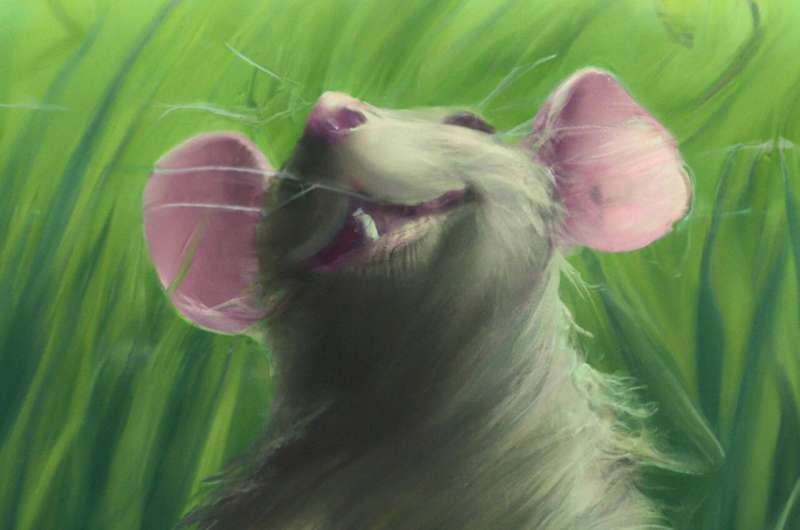July 7, 2023 report
This article has been reviewed according to Science X's editorial process and policies. Editors have highlighted the following attributes while ensuring the content's credibility:
fact-checked
peer-reviewed publication
trusted source
proofread
Testing of wind sensing in rats shows sub-orbital whiskers play a role in assessing direction

A team of neurobiologists and neuroscientists at the Woods Hole Marine Biological Laboratory has found that sub-orbital whiskers play a role in helping rats determine which direction air movement is coming from and to respond accordingly. In their paper published in the open-access journal PLOS Biology, the group describes their study of rat whiskers.
The work began after team members noted that little research has been done regarding wind sensing in mammals. To learn more, they opted to focus a research effort on rats and their whiskers. Prior research has shown that rats use their whiskers for a variety of purposes, one of which is to sense air movement. The team on this new effort noticed that the sub-orbital whiskers had not been included. Sub-orbital whiskers are those located above the eye. In rats, such whiskers are few but quite long. To learn more about their purpose, the researchers tested them in several ways.
The first test involved anesthetizing several rats and then exposing them to different amounts of airflow (wind). This allowed the team to analyze and measure the movement of the whiskers under various conditions. They found that the sub-orbital whiskers behaved somewhat differently than the nose whiskers. Due to their length, they were more displaced under low wind conditions. They also found that the sub-orbital whiskers tended to bend upward more than other whiskers on the face.
Next, the team conducted micro-CT scans on the rats, focusing most specifically on their sub-orbital whisker follicles. They found that they were slightly different than follicles of other whiskers—the nerves were arranged in a way that would allow for finer sensing of direction change. This would allow the rats to accurately note which way air was moving around them.
The research team then created simulations to show how rats might use their whiskers to keep track of wind direction and how hard it was blowing. They found that response to wind was much more acute in the sub-orbital whiskers.
The team concludes by noting that prior research has shown that rats almost always spontaneously turn their faces toward a wind source blown at them, even in complete darkness. They suggest that rat sub-orbital whiskers are used for air movement sensing.
More information: Matias Mugnaini et al, Supra-orbital whiskers act as wind-sensing antennae in rats, PLOS Biology (2023). DOI: 10.1371/journal.pbio.3002168
Journal information: PLoS Biology
© 2023 Science X Network





















